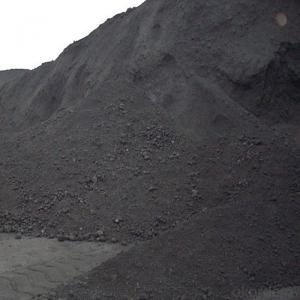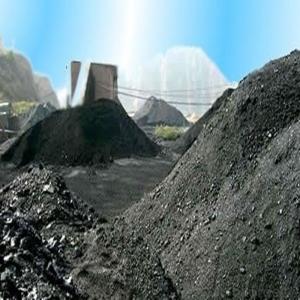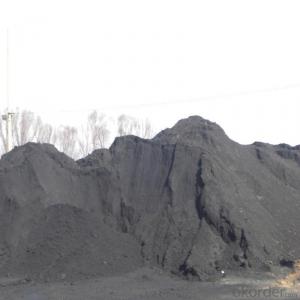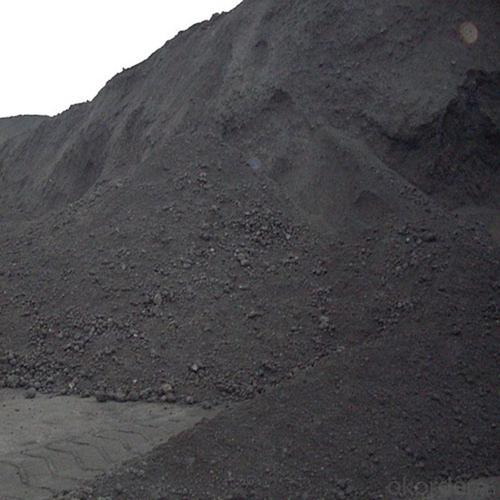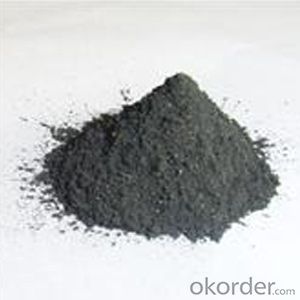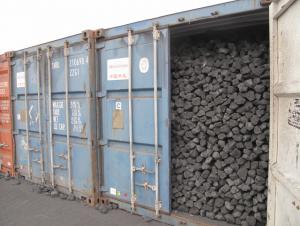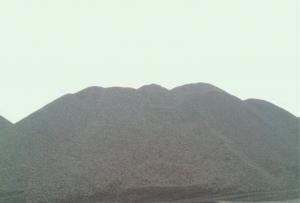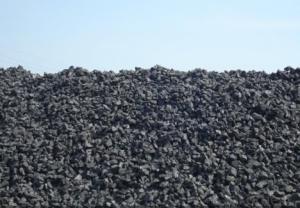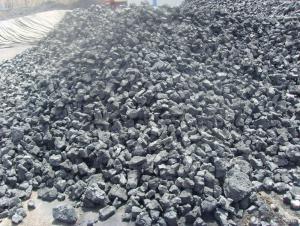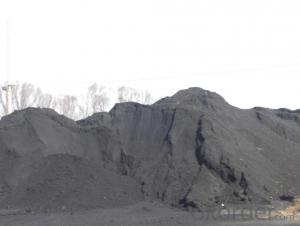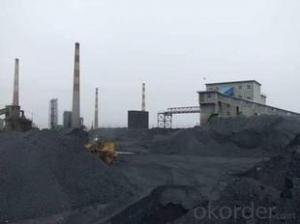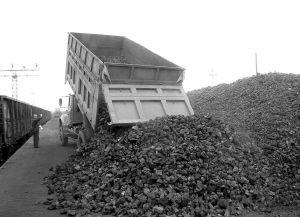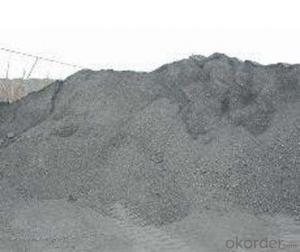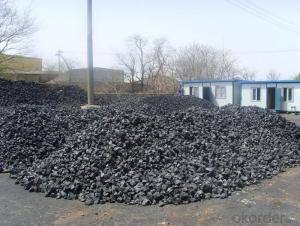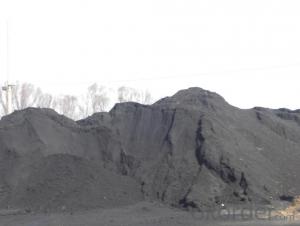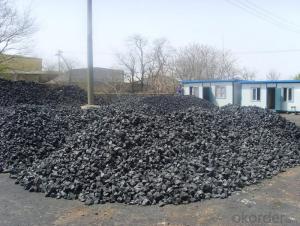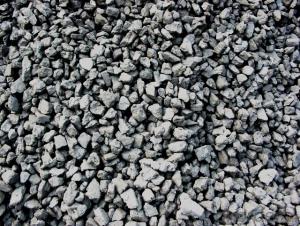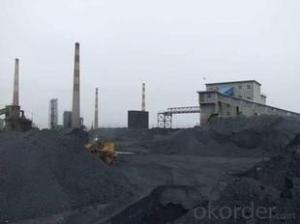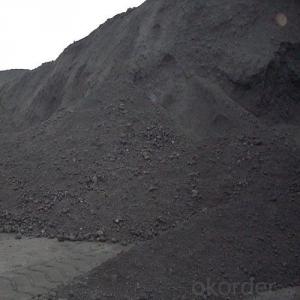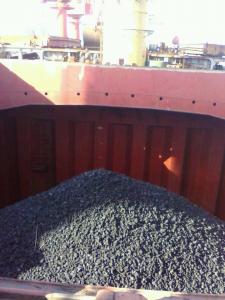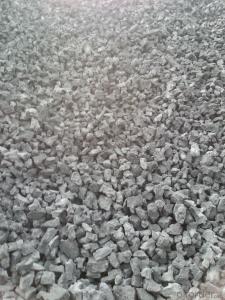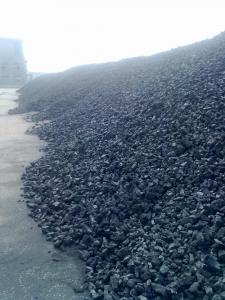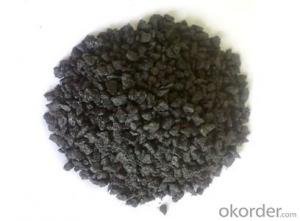Coke Breeze of 0 to 5 mm
- Loading Port:
- Tianjin
- Payment Terms:
- TT OR LC
- Min Order Qty:
- 100 m.t.
- Supply Capability:
- 3000 m.t./month
OKorder Service Pledge
OKorder Financial Service
You Might Also Like
1. Structure of Metallurgical Coke of Coke Strength after Reactivity 65 Description:
Coke is a hard texture, with carbon as the main component of irregular porous body, with cracks and defects in silver. The true density is 1.8 ~ 1.95 g/cm3, bulk density is 400 ~ 500 kg/m3, the porosity of 35% ~ 35%,.Coke all vertical and horizontal crack can be seen with the naked eye observation. The vertical and horizontal crack along the thick break, still is focal piece containing micro cracks.
Coke production of coking coal (coking coal), also known as metallurgical coal, belongs to the bituminous coal or sub-bituminous coal. Or use the various ratio of coal blend coking. Coking coal in the coke oven is isolated from oxygen after 1000 ° C carbonization is volatile component has been removing, the rest of the solid matter or coke. With the need of ironmaking as little as possible of sulphur, phosphorus pests, so should choose low sulfur, low phosphorus of coking coal.
2. Main Features of the Metallurgical Coke of Coke Strength after Reactivity 65:
• Quality assurance
• Mutual benefit
• Preferential price
• Various choice
3. Metallurgical Coke of Coke Strength after Reactivity 65 Images:
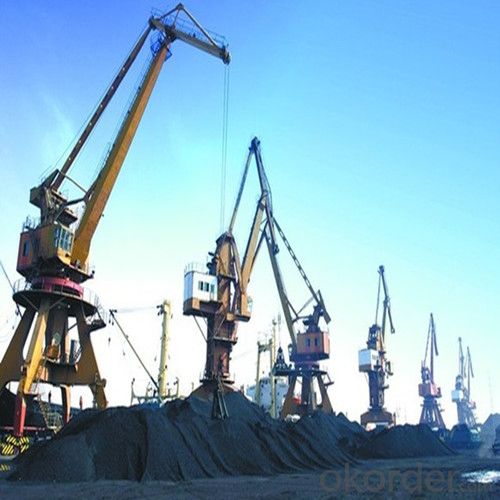
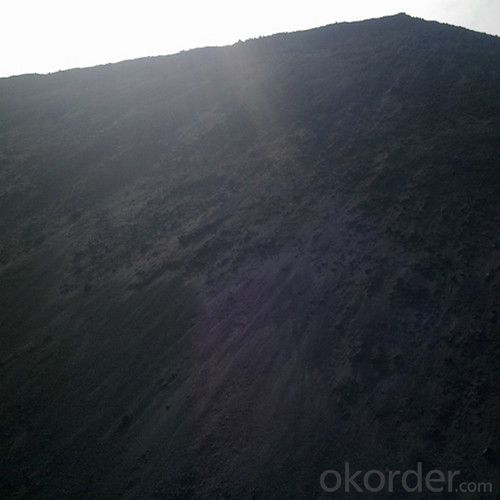
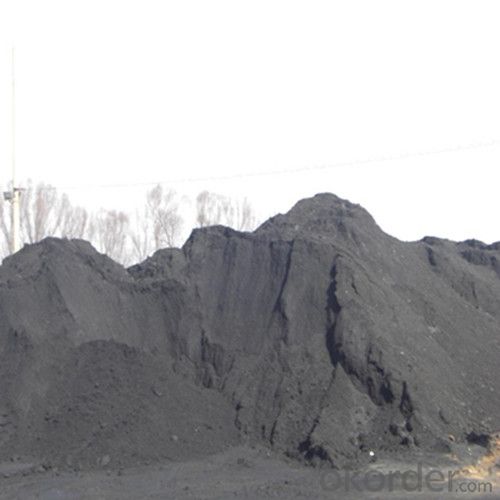
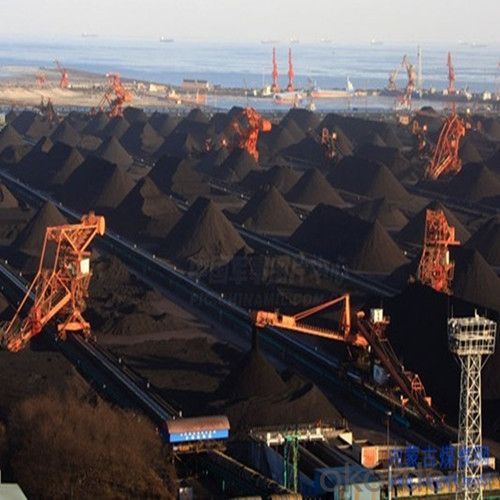
4. Metallurgical Coke of Coke Strength after Reactivity 65 Specification:
Parameters | Ash(DB) | Moisture (ARB) | Volatile Matter (DB) | Fix Carbon (DB) | Size 0-5mm | +5mm |
Guarantee | 12.5%max | 15%max | 1.5%max | 83%min | 90%min | 5%max |
5. FAQ
We have organized several common questions for our clients,may help you sincerely:
1) Main type
Metallurgical coke is blast furnace coke, coke, iron alloy and nonferrous metal smelting with coke. As more than 90% of the metallurgical coke for blast furnace ironmaking, so often called the blast furnace coke metallurgical coke.
Foundry coke is dedicated to cupola molten iron. Coke is the main fuel of cupola molten iron. Its role is hot metal melting furnace charge and overheating, support stock column maintain its good air permeability. As a result, coke blocks should have large, low reactivity, low porosity, with sufficient impact crushing strength, ash content and low sulfur content.
2) Application of coke
• Used for blast furnace ironmaking and used for copper, lead, zinc, titanium, antimony, mercury
• Other non-ferrous metal smelting of blast furnace,
• Reducing agent, compound
• The function of stock column frame.
3) The history of coke
From around the world, the coking coal resources are scarce, it is the precious resources must be protected, so has been seldom used coking coal coking alone. In China, the first kind of typical coal coking coal with hebei feng feng coal mine, shanxi gujiao cetrimonium, heilongjiang drops of jixi, anhui huaibei zhangzhuang and dabao top-coal panzhihua in sichuan province.The second category of typical coal coking coal have jilin tonghua iron works and the Inner Mongolia baotou beach ditch coal.Benxi, northeast China hebei tangshan, jingxing, shandong xinwen, etc., are all famous origin of coking coal.
Parameters | Ash(DB) | Moisture (ARB)
| Volatile Matter (DB) | Fix Carbon (DB) | Size 0-5mm
|
+5mm |
Guarantee | 12.5%max | 15%max | 1.5%max | 83%min | 90%min | 5%max |
At present, the main customers are NOBLE GROUP, IMR and so on. Our mainoverseas markets are Japan, India, Brazil, Iran, Vietnam, and so on.
Let me know your demands then I can check availability.
- Q: The difference between coal and coke
- The semi coke production tend to low temperature carbonization, distillation temperature at 600 degrees Celsius, due to a late start, at present the low temperature carbonization furnace single furnace annual output of 30 thousand tons / year in most equipment under low temperature carbonization furnace forum of more than 50 thousand tons / year scale is still at the exploratory and experimental stage, technology of the large-scale equipment is still not mature, can only achieve centralized mass production using a combination of multi furnace technology. The use of coal field is quite widespread, especially in the carbonaceous reducing agent has unique properties, economic advantages are very obvious.
- Q: Which heroes know, please give the source of the data.
- From the production equipment and technology of the popular view, a ton of coke oven gas produces about 400 cubic meters, of which about 200 cubic meters of coke oven returned through the pipeline used for coking heat source, the remaining more than and 200 cubic meters was emptying, "or the lantern".
- Q: Types of coke and use of coke
- The vertical furnace processing of low metamorphic coal production of calcium carbide, ferroalloy, coke, chemical fertilizer production and ultra high power electrode, aerospace and medical high technology and high value-added products such as carbon needle coke the world's most complete and unique characteristics of the Chinese coking industrial system.
- Q: Coke indicators are divided into grades
- Coke crushing strength refers to coke can resist foreign impact force without ability along cracks or defects at the broken, represented by the M40 value; wear strength of coke coke refers to the ability to resist external friction without surface of glass forming debris or powder, said M10. The cracking degree of coke affects the M40 value of its breaking strength, and the pore structure of coke affects the M10 value. There are many methods for determination of M40 and M10 value method, commonly used in our country the German migon drum test.
- Q: What is the essential difference between coal and coke?
- Coke]Coke is bituminous coal in the absence of air is heated to 950-1050 DEG C, after drying, pyrolysis, melting, bonding, curing and contraction of the final stage is made, the process is called high temperature coking (high temperature carbonization). Coke obtained from high temperature coking for blast furnace smelting, casting and gasification. Coke oven gas produced in the process of coking and recovery is not only a high calorific value of fuel, but also an important industrial raw material for organic synthesis.Coke is mainly used in blast furnace ironmaking and smelting of non-ferrous metals such as copper, lead, zinc, titanium, antimony, mercury and so on. The use of coke instead of charcoal in the blast furnace has laid the foundation for the large-scale development of modern blast furnaces and is a major milestone in the history of metallurgy. In order to achieve better technical and economic indexes of blast furnace operation, the coke (metallurgical coke) must have proper chemical and physical properties. In addition to a large number of coke used in iron smelting and non-ferrous metal smelting (metallurgical coke), but also for casting, chemical, calcium carbide and iron alloy, the quality requirements are different. Such as foundry coke, generally require large size, low porosity, high fixed carbon and low sulfur; chemical gasification, strict requirements for strength, but requires good response, high ash melting point; calcium carbide and coke production requirements to improve the fixed carbon content.
- Q: I work in the coking plant, so there are conditions to get coke and is burning, I would like to use coke barbecue line? Just like charcoal Mutton Cubes Roasted on a Skewer, OK? Understand the answer
- I work in the coking plant, so there are conditions to get coke and is burning, I would like to use coke barbecue line? Just like charcoal Mutton Cubes Roasted on a Skewer, OK? Understand the answer
- Q: How many degrees of coke ignition temperature can ignite coke
- Ignition temperature (450-650) in air;Dry ash free base low calorific value is 30-32KJ/g;The specific surface area is 0.6-0.8m2/g
- Q: Effect of coke powder ratio on the index
- Evaluation of coke quality1, coke: sulfur sulfur is a harmful impurity, pig iron smelting, which makes it one of the iron quality. In steel and iron sulfur content greater than 0.07%, is a waste. From the 11% blast furnace of sulfur ore; 3.5% limestone; 82.5% from coke, so coke is the main source of sulfur. The charge directly affects the coke into blast furnace of sulfur when the sulfur content of coke production. For more than 1.6%, 0.1% sulfur, each additional 1.8%, increase the amount of coke, an increase of 3.7%, ore blast volume added limestone to reduce the yield by 0.3%, sulfur content of 1.5 - 2% metallurgical coke requirements do not exceed 1% 0.7%., the sulfur content of metallurgical coke is less than - 0.4 large and medium sized blast furnace
- Q: What is coke? What is the use?
- Lay the foundation for large-scale modern blast furnace, is an important milepost in the history of metallurgy. The blast furnace operation and achieve good technical and economic indexes, smelting with coke (coke) must have appropriate chemical and physical properties, including thermal properties in the smelting process.
- Q: What is the difference between coke and coking coal
- Coking coal is a kind of bituminous coal with a high degree of deterioration, and the thermal stability of the resultant colloid is good when the coke is produced separately. The block size of the coke is large, the crack is small and the strength is high
Send your message to us
Coke Breeze of 0 to 5 mm
- Loading Port:
- Tianjin
- Payment Terms:
- TT OR LC
- Min Order Qty:
- 100 m.t.
- Supply Capability:
- 3000 m.t./month
OKorder Service Pledge
OKorder Financial Service
Similar products
Hot products
Hot Searches
Related keywords
